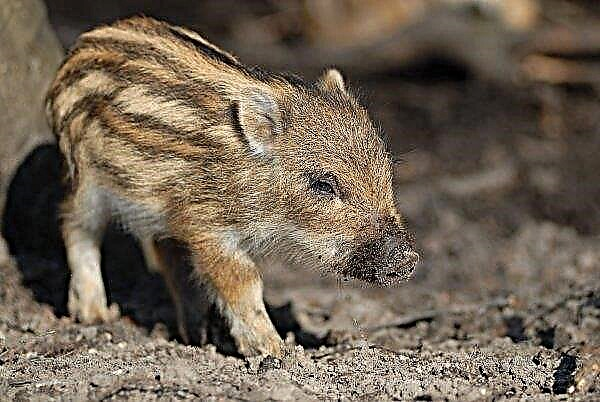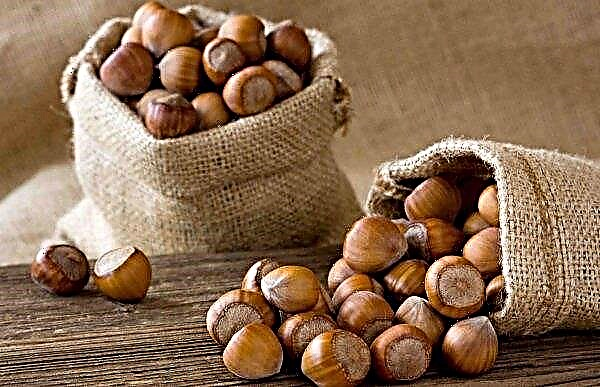Technically, the word “coriander” should be used to describe an annual herb with a spicy smell. But when talking about coriander, they usually mean spice obtained from the seeds of this plant. About the features of growing coriander and caring for it in the open ground, read in this review.
Plant description
Coriander is a herbaceous annual of Coriandrum sativum. A flowering plant is an excellent honey plant. It can be grown on beds for yourself or for sale. Greens and fruits are used in cooking, cosmetics, the manufacture of flavored soaps, tobacco and for other purposes. Coriander leaves, also known as cilantro, have a bright, almost citrus flavor. They are widely used in the culinary of Mexico, the United States and other Latin American countries.
Did you know? Coriander is considered the oldest spice on the planet. Its seeds are found in the ruins of cities dating back to 5000 BC. e. It is mentioned in the Bible. Scientists suggest that his homeland — Near East.
It is believed that it can be used to eliminate digestive problems, including all types of disorders: diarrhea, bloating, nausea, cramping, loss of appetite, hernia. It is also used to treat infections caused by bacteria and fungi. There is evidence that the plant can be used to cleanse the body.

Presumably coriander was first used by people in the Mediterranean region. From there, along with the Roman conquests, it spread throughout the territory of modern Europe, and in the era of great geographical discoveries came to other continents. In the CIS, it grows well in Ukraine, central and southeastern parts of Russia, the Rostov region and other regions with long, warm summers.
The plant belongs to the Umbrella family and has a characteristic structure:
- spindle-shaped single-stemmed root;
- long straight stems. Plant height - 100–120 cm;
- 2 types of leaves: broad-lobed dissected upper and long-basal basal lower leaves;
- umbrella-shaped peduncles with small white flowers. When they bloom, they form fruits - brown-yellow grains with a strong aroma.
What we know as seeds is dried fruit used as a spice. They produce 2 important ingredients: essential oil and cooking oil for culinary purposes. The seeds themselves are used in marinade fillings when harvesting vegetables for the winter. The leaves of the plant and the ripened seeds taste completely different.
Coriander planting dates
The plant is cold-resistant, therefore, sowing is possible from early spring (in March - April). But they sow seeds until September. It is important to have time to harvest before frosts. If you grow it in a greenhouse, then planting begins a month earlier. Winter sowing is also used. This is a natural way of sowing - seeds that have fallen into the soil "sleep" in the winter and germinate in the spring, as soon as the weather is favorable for growth. Sprouted seedlings withstand frost up to -5 ° C.

How to choose a site for landing
Coriander grows best on well-drained soil. Sandy, loamy and clay soils are suitable for him, provided that the site does not stagnate water. She can soak the roots and the plant will die. Well, if the site is abundantly lit by the sun. Areas also suitable where it is sunny early in the morning or afternoon, and there is a shadow on the hot part of the day. It is important that coriander does not like heat, and at an air temperature of + 24 ° C it begins to form flower arrows, not leaves.
This must be taken into account, depending on the purpose of cultivation:
- on greens (getting cilantro);
- to get the seeds.
Important! Breeders obtained different varieties of plants. Calypso, Chicot and Leisure — best for leaf production, and Santo produces larger flower heads. When buying a variety, pay attention to its purpose.
How to plant coriander seeds at home
Before planting seeds, they need to be prepared. The coriander kernel is quite dense, so it is pre-crushed by squeezing two seeds together. Then you need to soak them in water for 1-2 days. This will increase the chance of germination.
Soil preparation for sowing
If the soil needs improvement, add garden compost or well-rotted manure. The application rate is 5 kg / m². Loosen the bed, removing large clods of earth and stones.

Seed sowing technology
Coriander propagates from seeds that are planted on a site to a depth of 1-3 cm. The row spacing is 25-30 cm. The seeding rate is 1.5 g / m². Landings can be arranged in a row or staggered.
You can also successfully grow it in pots or trays filled with good compost. Since the roots reach a length of 25 cm, you will need a deep pot. Scatter seeds over the surface of the soil in a pot and water well; sprinkle them with a thin layer of earth. It is advisable to sow 5-6 seeds in one pot with a diameter of 25 cm.
Did you know? Oil and coriander seeds are found in the tombs of the pharaohs. And this is evidence that the plant was grown purposefully, since it is not found in the wild nature of Egypt.
Proper care of seedlings
Coriander care consists of:
- loosening;
- glaze;
- weed control.

Features of watering
Water as soon as the soil dries - about 1-2 times a week, depending on the weather. In rainy weather, watering is not performed. During periods of drought, small young plants are often watered. Large can tolerate the lack of watering, due to the deep bedding of the roots.
Rules for feeding coriander in the garden
Usually, coriander is not fed - just add humus or compost to the site when planting. But if the plants are frail or suffer from heat, they are fed with liquid organic fertilizers.
Did you know? The name of the plant in question comes from the Greek word koris, which means "stinky bug." It is probably obtained due to the strong aroma that its leaves give off.
Thinning Sprouts
Seed germination takes up to 3 weeks. They will need to be thinned out to leave 1 plant at a distance of 20 cm from each other. This distance is sufficient to make it convenient for them to grow. If you see umbrellas on a plant that you grow to produce leaves, then remove them immediately. It is important to save maximum energy for growing leaves.

Harvesting and storage
Separate harvesting is started 45–70 days after planting. At this point, the leaves reach a length of 10-15 cm and can be cut as necessary. If you cut the entire plant, then do it at any height above the soil.
Plants that are left on the seeds must be cut off when half the umbrellas turn brown. The stems are bundled and dried in a dry room, out of direct sunlight. This will take about 3 weeks. Then they are threshed or laid in a paper bag, after a while they fall off themselves. The seed yield is 120 g / m².
Coriander is a universal spice that is used in the form of leaves and seeds. There is nothing complicated in growing it. But he can add new flavors to your dishes.Important! Fresh seeds taste unpleasant, so only very well dried ones are consumed.












